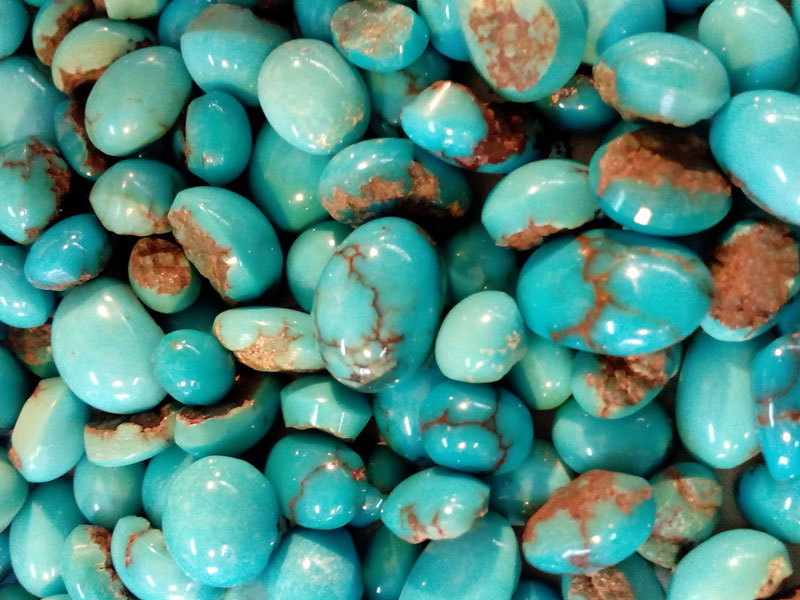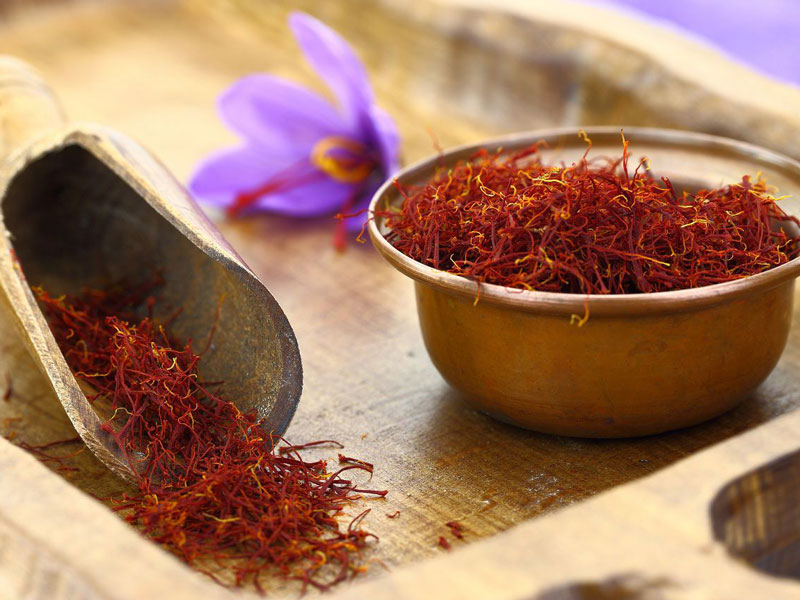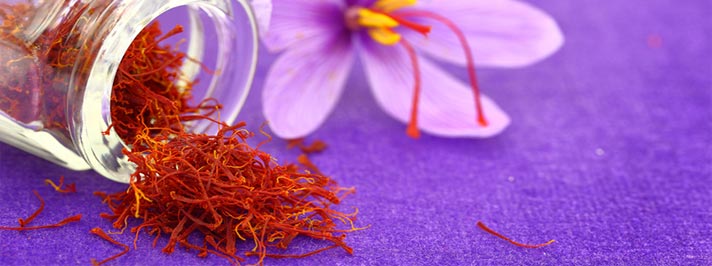Iran lux souvenirs: Caviar, Saffron, turquoise + Photos
Traveling to Iran and not bringing back souvenirs with you, is like being in Santa’s house, but not taking your present. Each region in Iran has particular handicrafts and souvenirs, but some are among the most special ones. As they are almost expensive, there might be some fake simples in stores. Stick with us to know how to recognize the originals!
Turquoise
The Turquoise stone is extracted almost around the world, but the most famous turquoise-made jewelry belongs to the range by the quality: Iran, Tibet, and the USA. Iran has remained the most important source of turquoise for at least 2000 years. The finest turquoise in Iran extracts from Neyshabur mines. the original Neyshabur turquoise has some qualities which are not found in other types. Here are some points to differentiate valuable turquoise stone from the fake ones. The turquoise is categorized in different groups based on its color, the veins and the mines it’s extracted from.

Iran lux souvenirs – the original Neyshabur turquoise has some qualities which are not found in other types
Types of turquoise
- Based on color:
Turquoise has a very wide color spectrum. From the pale to the greenish-blue. The stronger the blue shade is, the more valuable that’ll be. - Based on the mine which is extracted from:
Respectively the mines of Neyshabur, Damghan, and Kerman produce the finest turquoise in Iran. To make sure that the turquoise you’re buying is original ask for identifications or check precisely the veins and color. - Based on veins:
Some turquoises have veins, while others are perfectly homochromatic and blue with no streaks or fractures on their surface. Although neither of the mentioned types has superiority over another in terms of stone quality, the golden veins turquoises also called spider turquoises are usually more popular.
How to make sure the turquoise is original?
To differentiate the original Iranian turquoise from the fakes is totally difficult even for professionals. But there are some easy tips for shoppers to identify the counterfeit stone.
- Turquoise stone generally turns Blue, chrome or vanadium green or in the range of pale blue to greenish-blue as well as yellowish-green, because of the existence of copper and iron in its Chemical Formula.
- The original turquoise color should somehow be opaque. The exaggerated glossy stone arouses suspicion.
- The High-quality turquoise is almost blue sky. Even though the original turquoise of Neyshabur might have some black veins or spots on it.
- You can heat a needle or key on the lighter and then put it on the stone. If it smells like resin or plastic and leaves a deep trace on the turquoise, it absolutely is fake.
- Scrape slightly the surface of turquoise with a sharp needle-shaped object. The original turquoise doesn’t get scratched this way and it can also scratch the glace no matter what its shape is.
How to take care of turquoise jewelry?
Being scratched, exposure to hot water, chemicals, and household detergents are the main hazards for the fine turquoise. Follow the instructions to take good care of your turquoise:
- The turquoise should not be in contact with lotions, body oils or perfumes. Otherwise, it changes color.
- Remove the turquoise jewelry while washing your hands. Detergents and chlorine-containing water damages turquoise.
- Avoid polishing or contacting turquoise stone with greasy substances.
The most reliable way to buy turquoise is to buy it from Mashhad (Reza Bazar) and Neyshabur.
Iranian Caviar
The southern coast of the Caspian Sea, part of Iran, is a natural habitat for sturgeon species that has provided clean water, abundant nutrition, and an ideal environment for the growth of these species. About 90% of the natural caviar marketed in the world comes from the Caspian Sea. These fish, having a cartilaginous structure from prehistoric times, have remained the same, as many biologists call this fish a living fossil. There are 27 species of “sturgeon” in the world, 5 of them are found in the Caspian Sea :
- The Beluga sturgeon
- The Starry sturgeon
- The Russian sturgeon
- The Persian sturgeon
- The golden sturgeon
As we all know the Sturgeons are endangered and rare and it takes that Sturgeons a long time to develop roe. That’s why caviar has always been rare and expensive. Despite being expensive, the Caviar has always been demanded because of its numerous properties. This makes the fraudsters think of producing artificial caviar. Read the following tips and be precise while buying this Iran souvenir:
- The fake caviar beads are black and exaggerated translucent, while the real caviar beads are somehow grayish and opaque.
- The real caviar beads are not perfectly round and have no adhesion, actually, they are more oval-shaped. But the fake caviar has a smooth, round and sticky surface. The raw material of such a product is paraffin which is not nutritionally valuable and is even detrimental to health. The paraffin made beads melt and stick together in case of being kept in a warmer place.
- Counterfeit black caviar is usually dyed artificially and repels if left for a while.
- Lower prices and large volumes of packages and amateur colorful package designs are the most obvious signs of a fake product.
- The color of caviar is mostly in black, gray, white and gold, in Iran.
- Note that if you buy a product in Iran and the package has Russian or Turkish notes on it, it is likely to be fake.
The most reliable Caviar brands in Iran are Raibod caviar, Talesh caviar, Mira’s caviar, and culture group. All mentioned companies have the possibility of online shopping.
Saffron
Almost 90 percent of the world’s saffron is produced in Iran, for 3000 years. This magic spice, with the enchanting odor, is called “the red gold” in Iran. The best quality of the spice of joy grows in the northeast of Iran, Khorasan province. It is not so easy to differentiate the real and fake saffron, but keeping the followings in mind can give you a clue :

Iran lux souvenirs – The best quality of the spice of joy grows in the northeast of Iran, Khorasan province
- Slide a small amount of the saffron, in a paper, if the oil is extracted from the saffron it’s fake, but being powdered with no trace of oil indicates the pureness of saffron.
- Original saffron has a lower coloring speed than counterfeit saffron. Put some saffron in boiling water, and wait for 5 minutes if the color of the silks didn’t turn white, it’s original. If the silks turn white within 5 minutes, it absolutely is fake.
- The normal silk of saffron shouldn’t be too glossy, being too glossy means it’s not pure.
- The taste and odor of saffron is a sort of constant indicator itself. The taste of the original saffron is a bit bitter but it has a pleasant aroma.
The most reliable and famous saffron in Iran belongs to these companies: Keshmoon group, Bahraman Saffron and Saharkhiz.
Are you planning to travel to Iran? Check out our Iran tours.







Leave a Reply
Want to join the discussion?Feel free to contribute!